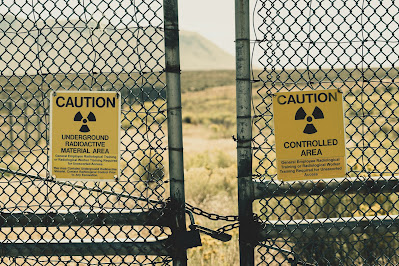Featured
- Get link
- X
- Other Apps
Ancient architecture and the the possibilities to replicate them using modern tools
Ancient architecture and the the possibilities to replicate them using modern tools
Ancient architecture is a testament to the ingenuity and skill of our ancestors. From the towering pyramids of Egypt to the intricate temples of India, ancient structures continue to fascinate and inspire us today. While many of these structures were built using primitive tools and techniques, modern technology has allowed us to better understand and even replicate them.
Ancient Technologies We Still Can't Replicate
Despite our modern advancements, there are still some ancient technologies that we cannot replicate. According to [Obsev], some of these technologies include:
- The Antikythera Mechanism: This ancient Greek device was used to track the movements of the sun, moon, and planets. It was discovered in 1901 and is believed to date back to the 2nd century BCE. While scientists have been able to decipher some of its functions, the device's complexity and precision are still beyond our current capabilities.
- The Pyramids: The construction of the pyramids of Egypt remains a mystery to this day. Despite numerous theories and attempts to replicate the process, we still do not fully understand how the ancient Egyptians were able to build such massive structures with such precision.
- The Nazca Lines: These mysterious geoglyphs in Peru were created by removing the top layer of soil to reveal the lighter-colored earth underneath. The lines form various shapes and patterns, including animals and geometric shapes. While we know how the lines were made, we still do not fully understand their purpose.
Replicating Ancient Architecture with Modern Tools
While some ancient technologies remain beyond our grasp, modern tools and techniques have allowed us to better understand and even replicate ancient architecture. For example, 3D printing has become a valuable tool for archaeologists and historians looking to recreate ancient structures.One example of this is the ruins of Tiwanaku in Bolivia. According to a study published in [Heritage Science], researchers were able to use 3D printing to recreate fragments of the ancient architecture. The researchers used historic field notes and measurements to create virtual 3D models of the fragments, which were then printed in 3D form at a reduced scale. This method allowed the researchers to better understand the structure of the ruins and how they were constructed.
Another example of modern technology being used to replicate ancient architecture is the use of laser scanning. According to an article in [National Geographic], laser scanning has been used to create detailed 3D models of ancient structures, including the temples of Angkor Wat in Cambodia. The laser scans allow researchers to create highly accurate models of the structures, which can then be used to better understand their construction and history.
The Importance of Preserving Ancient Architecture
While modern technology has allowed us to better understand and even replicate ancient architecture, it is important to remember the value of preserving these structures. Ancient architecture provides us with a glimpse into the past and helps us to better understand the cultures and societies that came before us.Preserving ancient architecture is also important for future generations. These structures are a part of our shared human history and should be protected and maintained for future generations to appreciate and learn from.
Conclusion
Ancient architecture is a testament to the ingenuity and skill of our ancestors. While some ancient technologies remain beyond our grasp, modern tools and techniques have allowed us to better understand and even replicate ancient structures. However, it is important to remember the value of preserving these structures for future generations to appreciate and learn from.
Citations:
[1] https://www.obsev.com/life/ancient-technologies-far-too-advanced/
[2] https://www.metmuseum.org/toah/hd/armod/hd_armod.htm
[3] https://youtube.com/watch?v=YZFN29FdCM0
[4] https://www.archdaily.com/893732/good-architecture-is-not-produced-by-rejecting-history-or-by-replicating-it-either
[5] https://heritagesciencejournal.springeropen.com/articles/10.1186/s40494-018-0231-0
[6] https://en.wikipedia.org/wiki/Rock-cut_architecture
Popular Posts

Why are Memories Forgotten?
- Get link
- X
- Other Apps

How is the Colour of a Lobster Determined?
- Get link
- X
- Other Apps

Can Sound Waves Solve Plastic Pollution?
- Get link
- X
- Other Apps

Can Animals Recognise Human Faces?
- Get link
- X
- Other Apps

Do plants sleep? The surprising science of sleep in the plant kingdom
- Get link
- X
- Other Apps

Is the Earth Spinning Faster?
- Get link
- X
- Other Apps

Can Bad Times Actually Improve Your Life? Surprising Benefits of Adversity
- Get link
- X
- Other Apps

Can Brain Implants Make You More Powerful?
- Get link
- X
- Other Apps

The Future and Potential of Nuclear Batteries
- Get link
- X
- Other Apps

Music and its impact on Studying
- Get link
- X
- Other Apps
Popular Posts

Why are Memories Forgotten?
- Get link
- X
- Other Apps

How is the Colour of a Lobster Determined?
- Get link
- X
- Other Apps

Can Sound Waves Solve Plastic Pollution?
- Get link
- X
- Other Apps

Can Animals Recognise Human Faces?
- Get link
- X
- Other Apps

Comments
Post a Comment